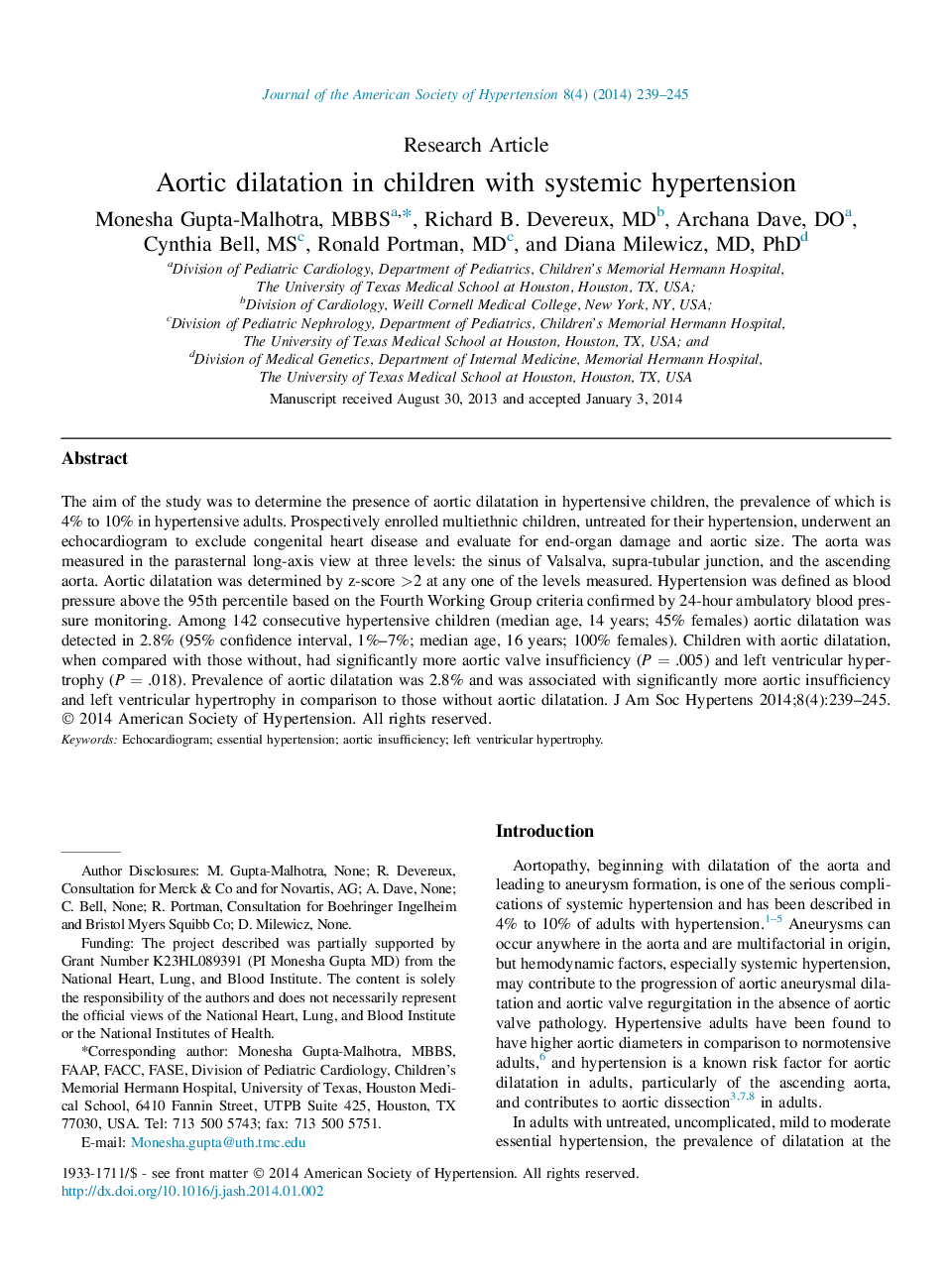| Article ID | Journal | Published Year | Pages | File Type |
|---|---|---|---|---|
| 2957114 | Journal of the American Society of Hypertension | 2014 | 7 Pages |
The aim of the study was to determine the presence of aortic dilatation in hypertensive children, the prevalence of which is 4% to 10% in hypertensive adults. Prospectively enrolled multiethnic children, untreated for their hypertension, underwent an echocardiogram to exclude congenital heart disease and evaluate for end-organ damage and aortic size. The aorta was measured in the parasternal long-axis view at three levels: the sinus of Valsalva, supra-tubular junction, and the ascending aorta. Aortic dilatation was determined by z-score >2 at any one of the levels measured. Hypertension was defined as blood pressure above the 95th percentile based on the Fourth Working Group criteria confirmed by 24-hour ambulatory blood pressure monitoring. Among 142 consecutive hypertensive children (median age, 14 years; 45% females) aortic dilatation was detected in 2.8% (95% confidence interval, 1%–7%; median age, 16 years; 100% females). Children with aortic dilatation, when compared with those without, had significantly more aortic valve insufficiency (P = .005) and left ventricular hypertrophy (P = .018). Prevalence of aortic dilatation was 2.8% and was associated with significantly more aortic insufficiency and left ventricular hypertrophy in comparison to those without aortic dilatation.
